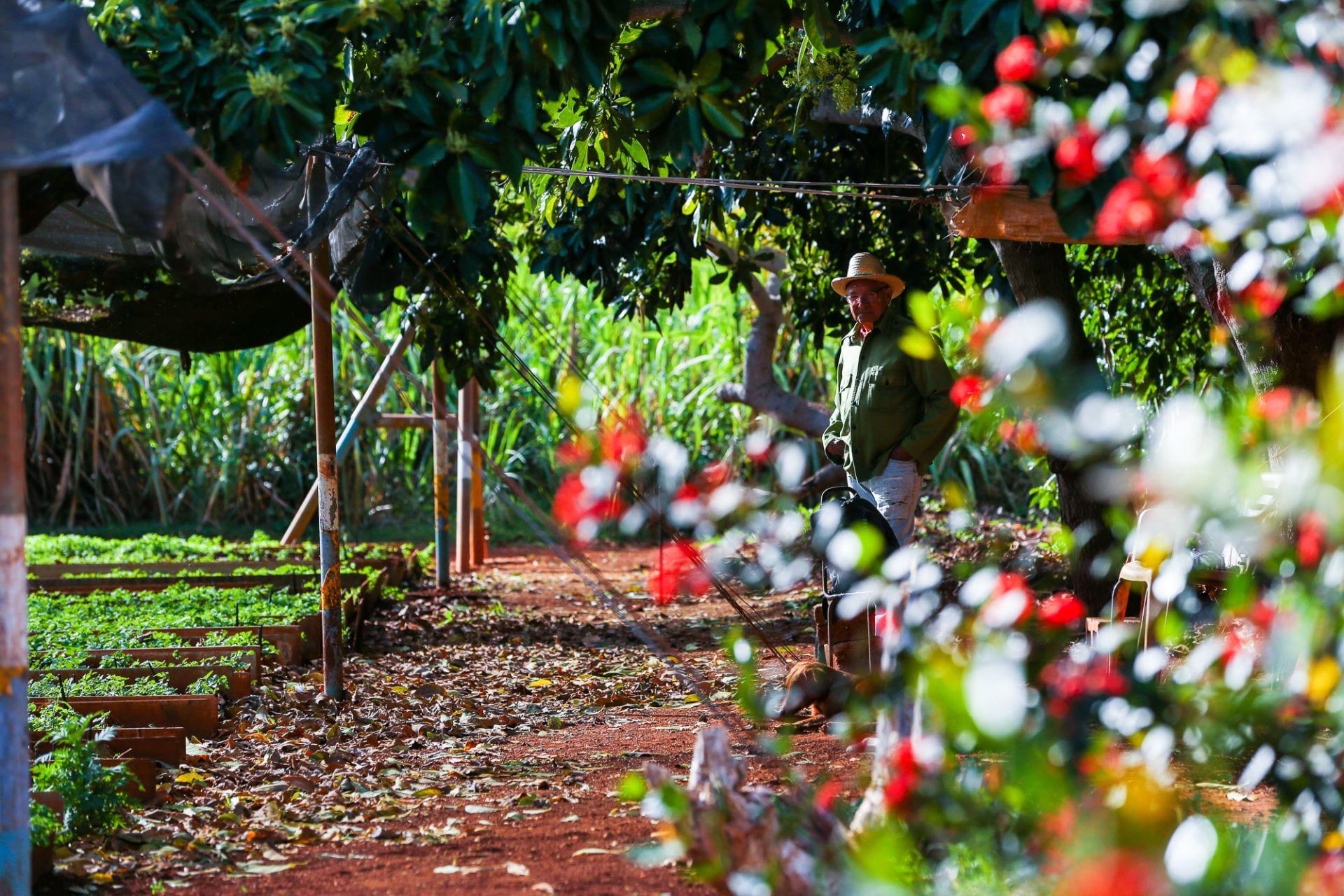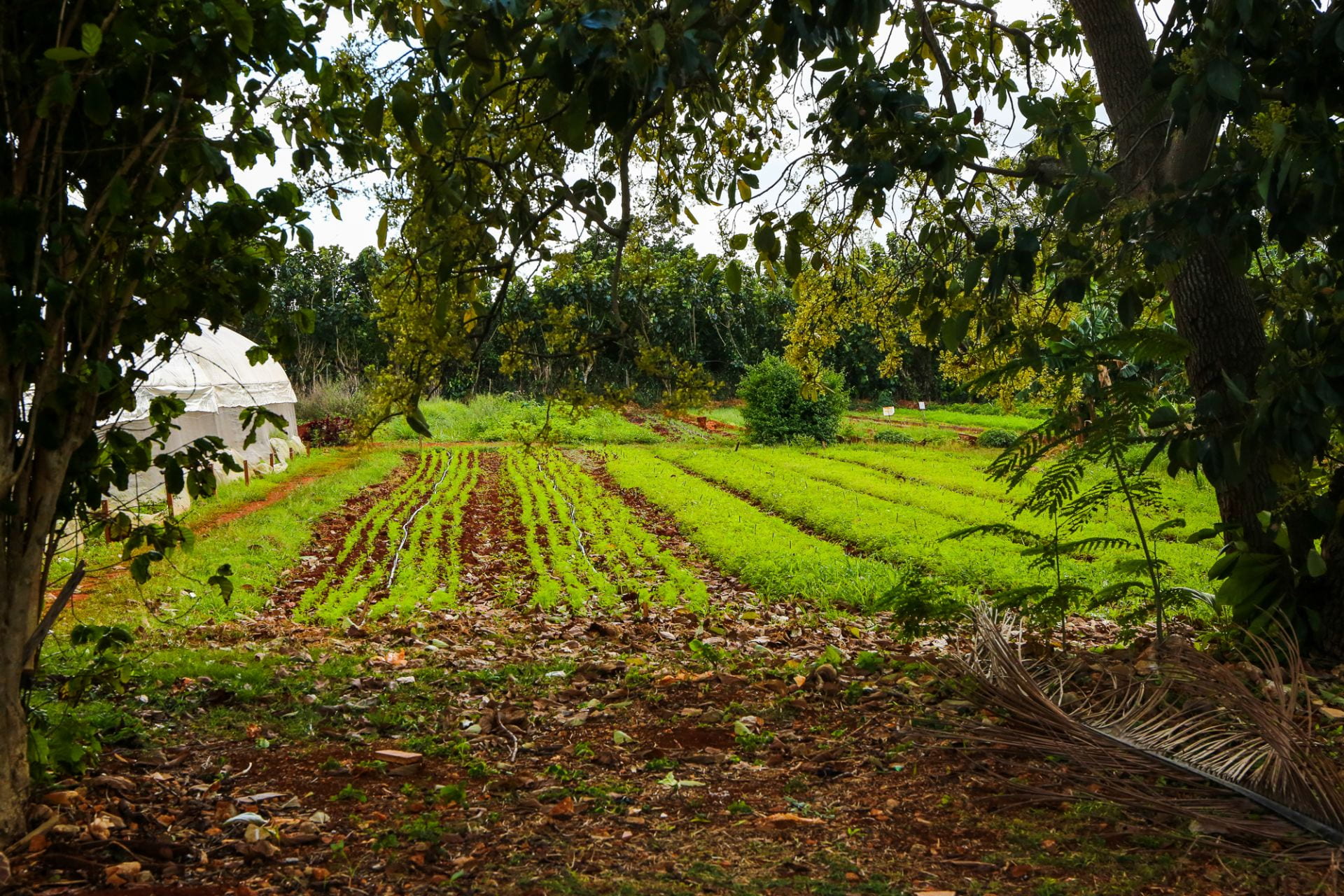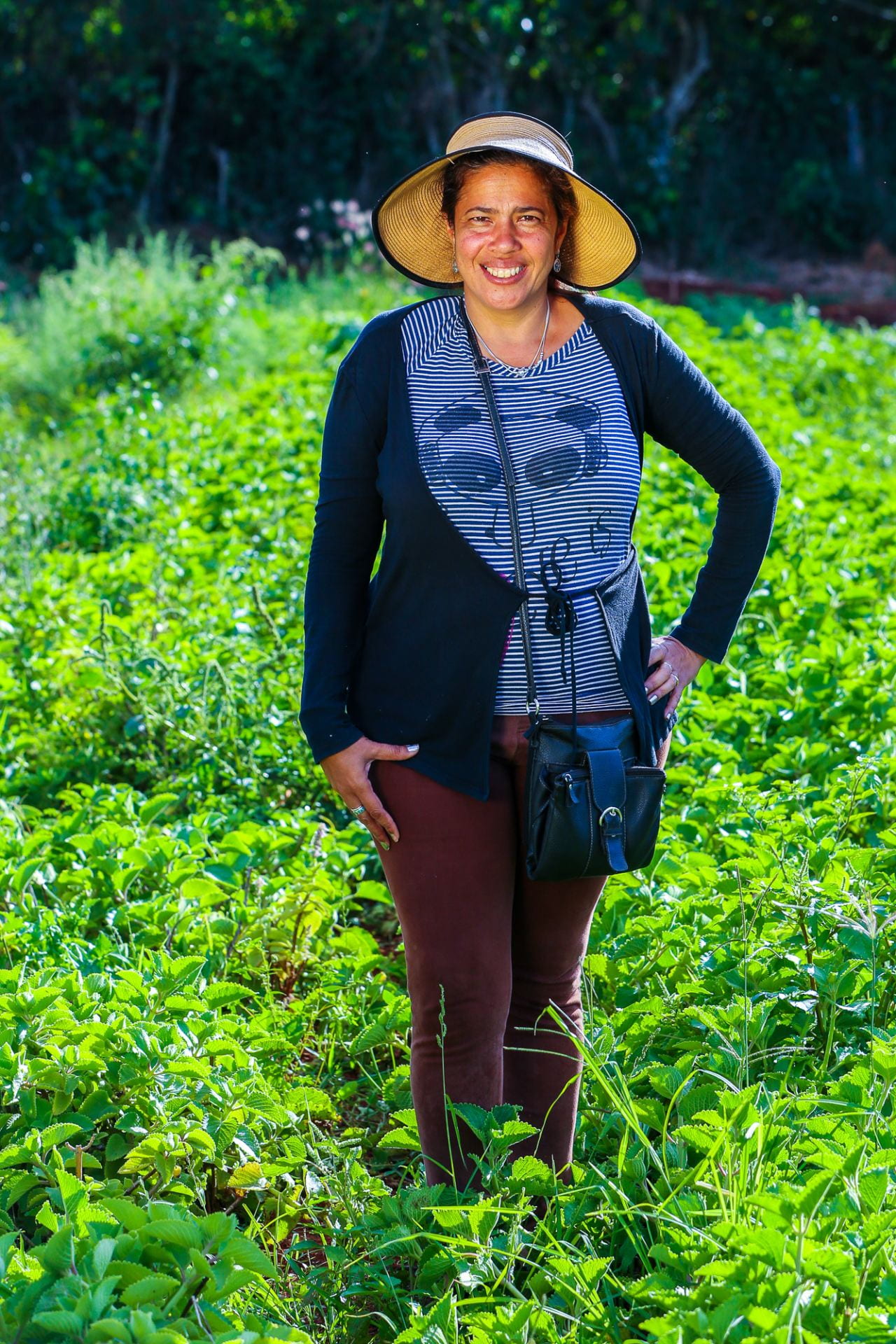Protecting Cuban roots, organically

By Jane Marks
HAVANA, Cuba — At Organoponico Vivero Alamar farm just outside of Havana, where rows of fruits and vegetables soak up the early spring sun on a recent Wednesday, a simple red-stemmed mint plant is under the 24-hour surveillance of a security guard and watchdog. The Cuban government needs to protect the leafy money-maker used in the famous mojitos at La Bodeguita del Medio, a restaurant-bar that still serves the same tart rum and lime cocktail Ernest Hemingway drank there 75 years ago.
As a result, this fragrant, delicate plant is enormously lucrative because of all the tourists who want to consume it – but few of them have any idea that is also organic.
In fact, most of the produce grown in Cuba is organic and has been for nearly 30 years. Starting with the fall of the Soviet Union in 1991, Cuba was left without its main trading partner and therefore was no longer supplied with the pesticides and chemical fertilizers that its farmers had become accustomed to. In a state of emergency to feed its people, the Cuban government had growers refer back to their roots for a more traditional way of farming that didn’t depend on expensive chemicals. This inadvertently pushed the country into becoming one of the world’s leaders in organic farming – the benefits of which extend far beyond the fields and farmlands.
“We are gathering the knowledge of the ancestors of the farmers who have good products and have not used chemicals,” said Nurys Valenciaga Valdès, a researcher in the Pastures and Forages department at the Institute of Animal Science, an agricultural-based university in Mayabeque, Cuba. “We have a culture where chemicals are not good and we also, from the economic point of view, cannot exist with those expensive products.”
To that end, Cuban farmers have learned to grow multiple plants in the same space to minimize the types of bugs that could wipe out a single crop. They’ve also tapped into ancient family farming lore that includes beating back pests by tying plants together upon themselves, much like the laces of a shoe.
Methods like these have resulted in a flourishing habitat in trade-deprived Cuba that other, richer countries could only dream of. One beneficiary is the bee population. While these critical pollinators are dying off all through the U.S. and Europe from various hostile influences including so-called Colony Collapse Disorder, they are thriving in Cuba. Though CCD is not directly linked to pesticide and fertilizer use, scientist believe they are a factor in diminishing bee’s immune systems. Which means, the disorder is not an issue on the island.
“The bees are the face of the system. If the bees are in trouble, you have a problem,” said Roberto Perez, environmental education and biodiversity program director of the Foundation for Nature and Humanity, Cuba’s only environmental non-profit. “In our case, not only are the bees doing well, but the other pollinators are also strong.”
The same is true of the island’s vast and thriving coral reefs that are still healthy and pristine when again, scientists in other parts of the world are trying to thwart the devastating effects of climate change and overpopulation on their reefs. The reason: During rains, scientists say, there is no runoff from pesticides and fertilizers to poison the waters.
“They didn’t use pesticides when the U.S. was,” said Amy Apprill, a coral reef scientist at the Woods Hole Oceanographic Institute on Cape Cod, Massachusetts, who has traveled to the island for the last four years to study its reefs. “All of these factors have contributed to the health of the reefs.”

But the news is not all good for the environment in Cuba. While the island nation’s economy started to improve in 2008 with then-president Raul Castro’s introduction of more private businesses, so too has farmers’ access to the very agents that kept the island so clean for all these decades.
Organically grown Cuban goods, once at 90 percent of the total yield, has been reduced in recent years to roughly 70 percent, said Perez. Scientists worry that as that number continues to decline, so will the health of the environment.
With more access to pesticides and chemical fertilizers, that risk might become a reality if Cuban farmers move away from their diverse crops and instead move toward what most modern farms engage in by planting one kind of crop, in what’s called monoculture, their plants will be at a higher risk for pests, making harsher pesticides necessary to keep them safe. While farming one kind of crop in this manor allows for mass production and higher yields, it also creates a dependency on synthetic chemicals.
“If you plant millions and millions of the same crop, of course you will have bugs that will eat it,” said Perez. In an attempt to motivate farmers to maintain organic gardens, researchers at the Institute of Animal Science continue to develop pesticide-free pest control strategies, such as inventive insect traps that have a hair gel-like substance they inject with a plant pheromone, or an essence that resembles the plant the bugs would want to eat. They put it into bottle cap-like containers with the idea the bugs will instead be drawn to the traps, and get stuck in the gel.
There are not enough resources for contraptions like these to be distributed to farmers throughout Cuba however, so institute scientists also busy themselves with teaching farmers how to marshal the resources of their own land to keep the soil healthy and full of beneficial nutrients.

Across the island, it is called the “Cuban way” – using what is available because there is simply no alternative. For example, it involves planting banana trees among the crops that replenish nutrients into the soil. It also involves integrating crops with livestock so that different elements are able to support and stabilize one another.
“You have to see the system in a holistic form,” said Valdès. “It is a regulatory system… The roots, the soil, the animals; all of this is connected.”
Moving forward, there is talk among the scientists and their farmer partners to somehow harness the rest of the world’s recent and growing obsession with organic foods to Cuba’s benefit.
“I think that we are in the moment that we need to label,” said Perez, who hopes that officially certifying these products as organic would create a more gourmet market, without hurting the locals who also need access to these fruits and vegetables for their own survival.
“Having that label opens you up to more markets and allows you to sell your product at a premium,” agreed Sam Malriat, organic crop consultant at the Rodale Institute, a U.S.-based non-profit in Kutztown, Pennsylvania, who works to foster organic farming methods. So far, Cuba doesn’t have an official labeling system, but is in the process of figuring out how to develop one.
Indeed, some sellers are already expounding on their organic capacity, even without the official certification. Farm-to-table restaurants are cropping up, advertising their fresh produce to customers with pockets deep enough to pay the premium prices. In Vedado, for example, the farm-to-table Mediterraneo restaurant on calle 13, charges approximately $14 for bowl of pesto pasta – which is about what the average Cuban makes in a month. This is more expensive than other restaurants in the area, but it is catered to tourists who can pay.
And organic farms like Organoponico Vivero Alamar – the one that grows Hemingway’s mint – are also reaping the benefits in abundance. With 25 acres of lush organic produce, this farm has 150 employees who, in addition to their monthly salary of 400 Cuban pesos (about $16), they also have an incentive system based on the operation’s profits, said Isis Maria Salcines, who started working there 20 year ago, when her father ran the family business.
